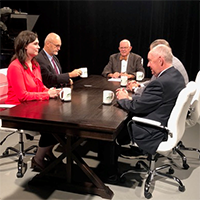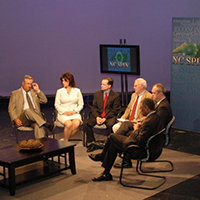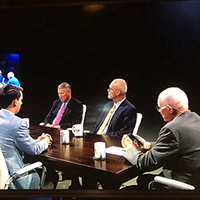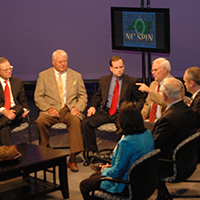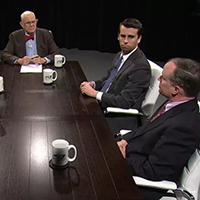Student debt relief in the world of for-profit college collapses
Published November 18, 2015
by Sharon McCloskey, NC Policy Watch, November 18, 2015.
State and federal regulators announced a string of court victories and settlements involving predatory for-profit colleges in recent weeks, and while at first glance the numbers are big and the recognition of widespread deception precedential, the impact on student borrowers laden with loan debt might not be so direct.
In late October, a federal judge entered a $531 million judgment against Corinthian Colleges — one of the largest for-profit college chains in the country, with more than 100 campuses and approximately 74,000 students — finding that the schools had deceived student borrowers about costs and career opportunities. The company had already ceased operations and shut down all its campuses in late April and filed for bankruptcy in May.
This past week, the Justice Department announced a $95 million settlement of a whistleblower case against Education Management Corporation arising out of claims that the company illegally paid its recruiters based on the number of students they recruited.
At the same time, a multistate group announced a separate $102 million settlement of student claims that the company’s courses cost more than students were led to believe, did not transfer as they’d been told they would and did not lead to the high-earning jobs promised by recruiters.
Despite those big numbers, though, student borrowers at the involved schools remain mostly on the hook for debt they acquired to cover the costs of attendance. EDMC has agreed, as part of the multistate settlement, to forgive more than $100 million in loans the company extended to students, but that doesn’t help with the millions in federal debt students undertook when enrolled at these institutions.
Efforts are underway at the U.S. Department of Education to develop an efficient program allowing the hundreds of thousands of student borrowers to get debt relief for federal loans acquired at the behest of these predatory for-profit schools, but that’s been a slow process. In the meantime, interest and penalties on students’ loans continue to accrue, and if students have defaulted, their credit histories are being marred in ways that might take years to reverse.
“Once again, student victims are left holding the bag,” Stephen Burd, a senior policy analyst at the New America Foundation told the Chronicle of Higher Education in response to the EDMC announcement.
***
Enrollment at for-profit schools, which lured older, lower-income adult students to enroll with overstated promises of career opportunities and understated estimates of overall cost, took off after the recession — with a concomitant rise in education debt. These students represent only 11 percent of the post-secondary enrollment population but carry 44 percent of all outstanding student debt. At Corinthian alone, students borrowed more than $3 billion in federal loans since 2010.
The $531 million judgment against Corinthian is important – not because anyone including the federal government will see a dime of that money, since the company is bankrupt, but because it came with a finding that company had in fact deceived students.
That finding, obtained by default when the company stopped defending itself in the case brought by regulators at the Consumer Financial Protection Bureau, may help students in their efforts to have the Department of Education forgive their federal loans.
Under federal law, student borrowers have essentially two paths to federal loan forgiveness: if they were a student at a school when it shut down (or within 120 days of that date) or if they can prove under state law that their school defrauded them into enrolling and taking on that debt.
With the October judgment, Corinthian students now have both routes open to them.
EDMC on the other hand settled both the multistate and whistleblower cases without admitting fault, and no court has made such a finding.
EDMC promised though to change its business practices, a tacit acknowledgment of fault and an outcome that regulators touted as significant. The company must give students accurate information about the total cost, average debt, default rate, job placement rate, average earnings, and ability to transfer credits associated with its programs.
But those promises ring hollow to borrowers saddled with debt, student borrower advocates said.
“The company agrees not to break the law going forward,” Toby Merrill, director of the Project on Predatory Student Lending noted in remarks to the Chronicle.
“The company has taken billions of federal funding and distributed that to its executives and shareholders,” but students will see very little of it.
EDMC did agree to forgive some $100 million in student loans it issued, amounting to an average of just $1,370 per eligible borrower – a drop in the bucket for students carrying upwards of $40,000 in student loan debt.
In North Carolina, 2,881 students will have $4.1 million in EDMC student debt forgiven, according to a statement released by Attorney General Roy Cooper.
In the whistleblower settlement, the company will pay $95 million spread out over several years and divvied up between the federal government and the whistleblowers; $20 million of that will go to lawyers who initially brought the cases, which the Justice Department joined in 2011.
***
The collapse of the Corinthian Colleges chain last spring resurrected the fraud defense as a path to federal student loan forgiveness and prompted calls for efforts to relieve borrowers en masse.
In June, the Department of Education appointed former North Carolina banking commissioner Joseph Smith to guide Corinthian College students through the debt forgiveness process and develop a broader system for students elsewhere seeking debt forgiveness based upon the fraudulent practices of their schools.
“The Department’s aim is to make the process of forgiving loans efficient, transparent, and fair—and to ensure students receive every penny of relief they are entitled to under law,” U.S. Education Under Secretary Ted Mitchell said at the time.
But streamlining that relief process is taking far longer than regulators, students and consumer advocates had hoped.
In a status report released in September, Smith said that borrowers from Corinthian schools – including Heald College in California, which the Department already acknowledged had engaged in fraud – would have to wait several months longer for relief as his office works to ensure that all such borrowers are treated uniformly.
At that time, more than 4,000 student borrowers had already filed claims for relief based upon fraud, and that number is certain to grow exponentially with the recent EDMC settlements adding to the pool of aggrieved borrowers.
Smith said that he wants to ensure that borrowers victimized by the same fraudulent conduct can proceed as a class and receive equal treatment.
As things currently stand, the onus is on the individual borrower to prove that the for-profit school violated state fraud laws, a burden that not only makes recovery difficult for the borrower but also could lead to similarly-defrauded borrowers being treated differently.
“I’m going to use every erg of intellectual energy of myself and the very good lawyers I’ve got around me to find ways to ensure the result we want, which is to have like claims treated alike,” Smith said in a phone conference with reporters discussing his report.
Some consumer advocates say that recovery could be hastened by marshaling proof of fraud already gathered by state and federal regulators, and by expanding the types of fraud eligible for relief to include violations of federal law – like those already found by the judge in the Corinthian Colleges settlement – and adopting those findings as collective proof for groups of students.
Efforts are now underway at revising the regulations to expand types of fraud eligible for forgiveness, with committee meetings set to begin in January 2016 and actual changes to come if at all some time months later.
For borrowers with mounting debt, that’s a long way off.

